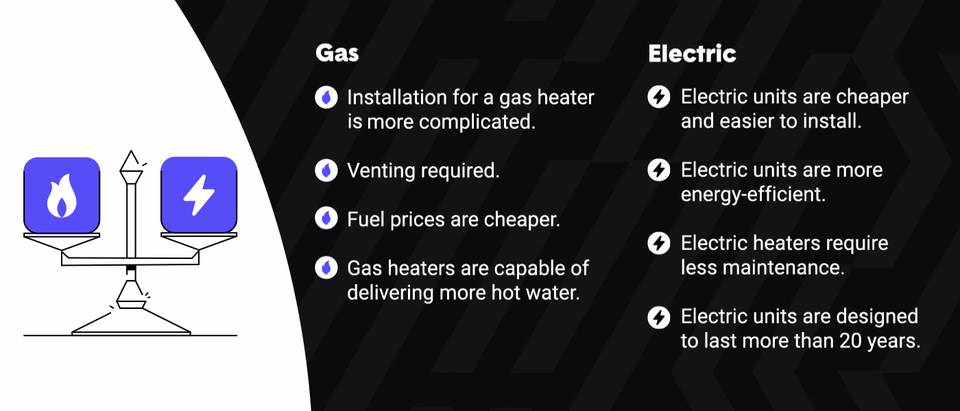Before you decide on a tankless or tank-type water heater, you’ll want to make a few considerations – while keeping energy bills in mind.
First, determine the necessary size for your household. For example, if you live with five other people, you’re probably using much more water than someone who lives alone. Water usage, plus the number of bathrooms in your home, plays a major part in the size of a traditional water heater, or the number of tankless heaters you’ll need to install. Heater output is measured in BTUs, or British Thermal Units. The maximum allowable output for residential gas heaters is 198,000 BTUs – if your home requires more than that, you’ll need a second unit.
It’s also a good idea to calculate the flow rate of your shower head. Water flow rates are measured in gallons per minute (GPM). All shower heads installed after 1992 must have a flow rate no higher than 2.5 GPM, though other appliances have varying rates. To determine the flow rate of any appliance in your house, time how many seconds it takes to fill up a bucket to one quart. Divide that number by 15 and you’ve got your GPM flow rate.
Another factor to consider is the temperature rise of your home. Different areas have different groundwater temperatures. Unsurprisingly, the closer you are to the equator, the higher the groundwater temperature. Higher groundwater temperature means it takes fewer BTUs to raise the water temperature. For example, southern Texas only needs 400 BTUs per gallon to increase the water temperature to 120 degrees, while Minnesota requires 650 BTUs per gallon.
The climate of your area can determine what level of energy efficiency you want, as well as the fuel for your heater. If you live in a southern state, you’re less likely to experience frozen pipes, so installing an electrical tankless heater outside might make sense. Electrical heaters are also more eco-friendly than gas-burning ones. However, if you already have a gas line, it could be costly to change fuel types. Knowing your current setup can save a lot of headaches for any future decisions.
Finally, determine the warranty of the heater. They can last anywhere from one to 10 years, and your choice may depend on the route you take. Electric models, for example, cost about as much to repair as it would to simply install a new unit.




